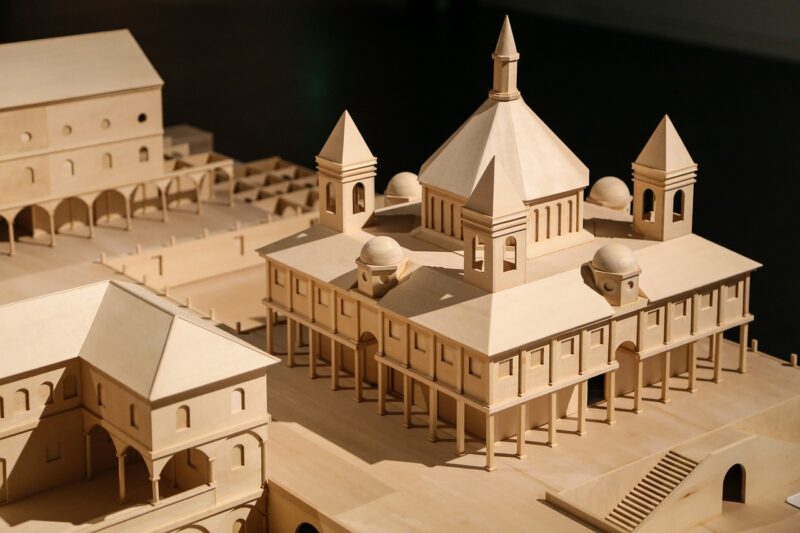How Leonardo da Vinci’s Inventions Were Centuries Ahead of Their Time
November 10, 2024

Leonardo da Vinci, a true polymath of the Renaissance period, was not only a master painter but also an extraordinary inventor. While most are familiar with his iconic works such as the Mona Lisa and The Last Supper, many forget that he was also ahead of his time in the field of technology and engineering. His notebooks, filled with sketches and ideas for inventions, reveal a mind that was constantly in pursuit of understanding and creativity. In this article, we will explore some of da Vinci’s most remarkable inventions and how they were centuries ahead of their time.
1. The Flying Machine
One of da Vinci’s most famous inventions is the flying machine. Inspired by birds, he designed a device known as the “aerial screw” around 1493, envisioning a helicopter-like craft that could lift off the ground. His sketches depict a spiral design that would create lift as it rotated.

Though the technology to create such a flying device did not exist in da Vinci’s time, his concepts laid the groundwork for modern aviation. In the 20th century, the principles of flight he theorized were finally realized, showcasing how his ideas were not mere fantasies but rather precursors to actual technologies.
2. The Armored Vehicle
Another amazing invention attributed to da Vinci is his design for an armored vehicle, often referred to as the tank. His sketches published in the late 15th century show a vehicle with a circular design, resembling a turtle shell and armed with cannons. Although the vehicle was never built during his lifetime, it highlights his understanding of military warfare and engineering.
Da Vinci’s armored vehicle was powered by manpower, requiring a crew to operate it. Many of the concepts behind his design are the foundation for modern armored vehicles utilized in warfare today, proving that he imagined advanced military technology centuries ahead of its time.
3. The Parachute
In the late 15th century, da Vinci conceptualized a parachute that would enable humans to float gracefully to the ground. His drawings depict a pyramid-shaped structure made of linen and a wooden frame, resembling designs that would not be realized until the 18th and 19th centuries.
The idea of breaking a fall from a height using a parachute seems basic now, but at the time, it was a revolutionary thought. In 2000, a British adventurer named Adrian Nicholas constructed a parachute based on da Vinci’s design, which successfully allowed him to descend safely from the sky. This truly illustrated the genius of da Vinci, laying the groundwork for skydiving and aircraft safety designs that are commonplace today.
4. The Robot Knight
Leonardo da Vinci also conceptualized a mechanical knight, which is often considered an early predecessor of robotics. His sketches from 1495 reveal designs for a life-sized automaton that could sit, wave its arms, and move its head. Although this robot was never constructed during his lifetime, modern robotics has drawn upon his innovative thoughts and created drones that can mimic human actions.
This robot knight’s design displayed da Vinci’s understanding of gears and pulleys, principles that underlie much of robotics today. The very idea of creating mechanical life forms reflects how intuitively advanced his thinking was, influencing the fields of engineering, automation, and artificial intelligence.
5. The Vitruvian Man and Human Anatomy
While not an invention in the traditional sense, da Vinci’s sketch known as the Vitruvian Man is critical to understanding human anatomy and proportion—a study that ultimately led to modern ergonomics in design. This drawing, done in the late 15th century, illustrates ideal human proportions based on the work of the ancient Roman architect Vitruvius.
Da Vinci went further with his anatomical studies, dissecting human corpses to gain a deeper understanding of muscles and organs. His observations and illustrations would not see publication until the 16th century, but they showcased understandings that would not be observed again until much later, significantly impacting the fields of medicine and art.
6. The Hydrolic Saw
In the field of engineering, da Vinci passionately pursued understanding hydraulics. One of his inventions involved the hydraulic saw, which used water power to drive a saw blade, highlighting his foresight in the utilization of energy sources that would not be widely explored until the Industrial Revolution.
This technology had the potential to revolutionize woodworking and construction, allowing for more refined cuts and increased production rates. While the hydraulic saw didn’t see significant implementation until centuries later, it is a testament to his innovative mind and ability to envision technology that would reshape industrial processes.
Conclusion
Leonardo da Vinci’s inventions were nothing short of extraordinary for their time, combining art and science in a way that would inspire generations to come. His visionary ideas, still applicable today, highlight the importance of creativity in technology and the arts. Through his sketches, he had the courage to explore the possibilities of innovation, making him not just an artist but also a pioneering inventor who foresaw the future.
In a world where the next breakthrough in technology is constantly being sought, looking back at the brilliance of Leonardo da Vinci can inspire us to imagine and create the extraordinary. His life reminds us that boundaries are often imaginary, and that the greatest achievements are reached when we dare to dream.








